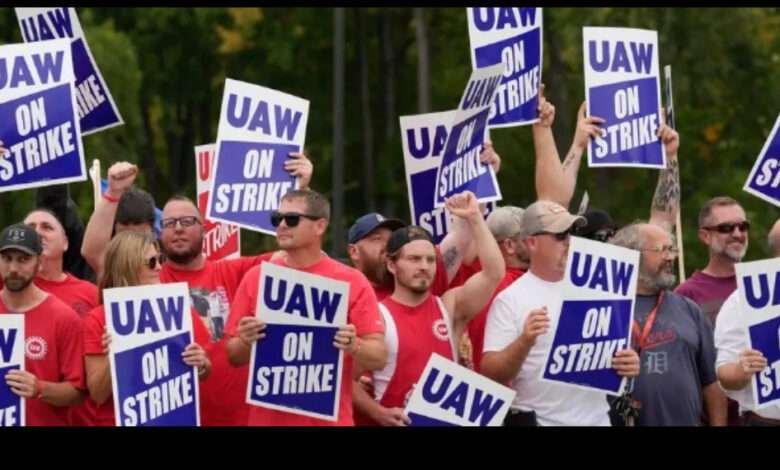“Clash of Perspectives: The UAW and the Auto Industry Workforce”

If one relied solely The UAW on recent news reports, the impression would be that big labor in the United States is experiencing an unprecedented resurgence. The United Auto Workers (UAW), known for its socialist leanings, successfully negotiated a favorable deal with major automakers, signaling a potential shift in the balance of power.
In Tennessee, where right-to-work laws protect employees from mandatory union membership, over 1,000 workers at Volkswagen’s Chattanooga factory initiated a vote on unionization led by the UAW. This move is part of a broader strategy to organize foreign-owned auto manufacturing plants in right-to-work states.
The UAW
The increase in union election petitions in recent years may be a response to economic challenges exacerbated by lockdowns. Notably, big labor celebrated successful unionization efforts at Amazon and Starbucks last year.
On paper, unionization appears beneficial, as it aims to secure higher wages, equalize pay across auto plants, and provide a united front against employers through collective bargaining. It seeks to make it more challenging for supervisors to dismiss or penalize workers and offers the prospect of enhanced pensions and fringe benefits. Despite these apparent advantages, polls indicate a widespread sentiment of “sounds good, no thanks” toward union membership. Gallup’s data from last year revealed that approximately one in six Americans lives in a household with one or more union members, and fewer than half of those in unions considered their membership “extremely important.”
While Gallup found a 67 percent approval rating for labor unions this year, down from a peak of 71 percent in the previous year, 58 percent of nonunion members expressed no interest in joining a union. The right-to-work movement questions why unions, purportedly beneficial, resort to compelling people to join or pay dues as a condition for certain jobs.
When considering a private sector job, individuals enter into a contractual agreement with their employer. Job satisfaction is a subjective experience, and according to Zippia, 65 percent of American workers are content with their jobs, but only 20 percent are passionate about them. The shift toward more computer-assisted employment, reflected in varying satisfaction rates between remote and in-office workers, raises questions about the relevance of traditional labor structures.
Fifteen years ago, General Motors faced financial challenges due to labor costs significantly exceeding those of foreign competitors. Excessive salaries, lifelong pensions, and other benefits contributed to GM’s bankruptcy and subsequent federal bailout. The UAW’s resistance to a 401(k) option, a wealth-building tool for many in the private sector, underscores the divergence in mindset.
Unions, by design, compress wages and hinder individual merit recognition. In today’s economy, which rewards exceptional productivity, technology allows employers to identify and compensate high-performing workers. However, in a collectivized workforce perpetually at odds with management, recognizing individual merit becomes challenging. This approach contradicts the prevailing economic ideology that values individual achievement.
The UAW’s historical dominance in the auto industry diminished over time, with foreign competitors gaining traction. Today, only around 14 percent of American auto workers are unionized, and foreign-owned brands employ more workers than the domestic Big Three. The UAW’s efforts to expand may face resistance from nonunion workers who acknowledge that their jobs exist because their employers made strategic decisions to avert economic pitfalls.






